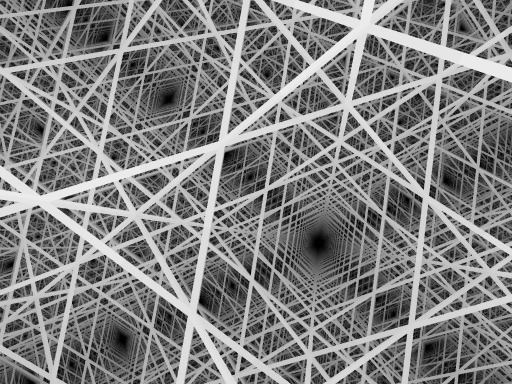 | ||
The quarter cubic honeycomb, quarter cubic cellulation or bitruncated alternated cubic honeycomb is a space-filling tessellation (or honeycomb) in Euclidean 3-space. It is composed of tetrahedra and truncated tetrahedra in a ratio of 1:1. It is called "quarter-cubic" because its symmetry unit – the minimal block from which the pattern is developed by reflections – consists of four such units of the cubic honeycomb.
Contents
It is vertex-transitive with 6 truncated tetrahedra and 2 tetrahedra around each vertex.
A geometric honeycomb is a space-filling of polyhedral or higher-dimensional cells, so that there are no gaps. It is an example of the more general mathematical tiling or tessellation in any number of dimensions.
Honeycombs are usually constructed in ordinary Euclidean ("flat") space, like the convex uniform honeycombs. They may also be constructed in non-Euclidean spaces, such as hyperbolic uniform honeycombs. Any finite uniform polytope can be projected to its circumsphere to form a uniform honeycomb in spherical space.
It is one of the 28 convex uniform honeycombs.
The faces of this honeycomb's cells form four families of parallel planes, each with a 3.6.3.6 tiling.
Its vertex figure is an isosceles antiprism: two equilateral triangles joined by six isosceles triangles.
John Horton Conway calls this honeycomb a truncated tetrahedrille, and its dual oblate cubille.
The vertices and edges represent a Kagome lattice in three dimensions.
Construction
The quarter cubic honeycomb can be constructed in slab layers of truncated tetrahedra and tetrahedral cells, seen as two trihexagonal tilings. Two tetrahedra are stacked by a vertex and a central inversion. In each trihexagonal tiling, half of the triangles belong to tetrahedra, and half belong to truncated tetrahedra. These slab layers must be stacked with tetrahedra triangles to truncated tetrahedral triangles to construct the uniform quarter cubic honeycomb. Slab layers of hexagonal prisms and triangular prisms can be alternated for elongated honeycombs, but these are also not uniform.
Symmetry
Cells can be shown in two different symmetries. The reflection generated form represented by its Coxeter-Dynkin diagram has two colors of truncated cuboctahedra. The symmetry can be doubled by relating the pairs of ringed and unringed nodes of the Coxeter-Dynkin diagram, which can be shown with one colored tetrahedral and truncated tetrahedral cells.
Related polyhedra
This honeycomb is one of five distinct uniform honeycombs constructed by the
The Quarter cubic honeycomb is related to a matrix of 3-dimensional honeycombs: q{2p,4,2q}
